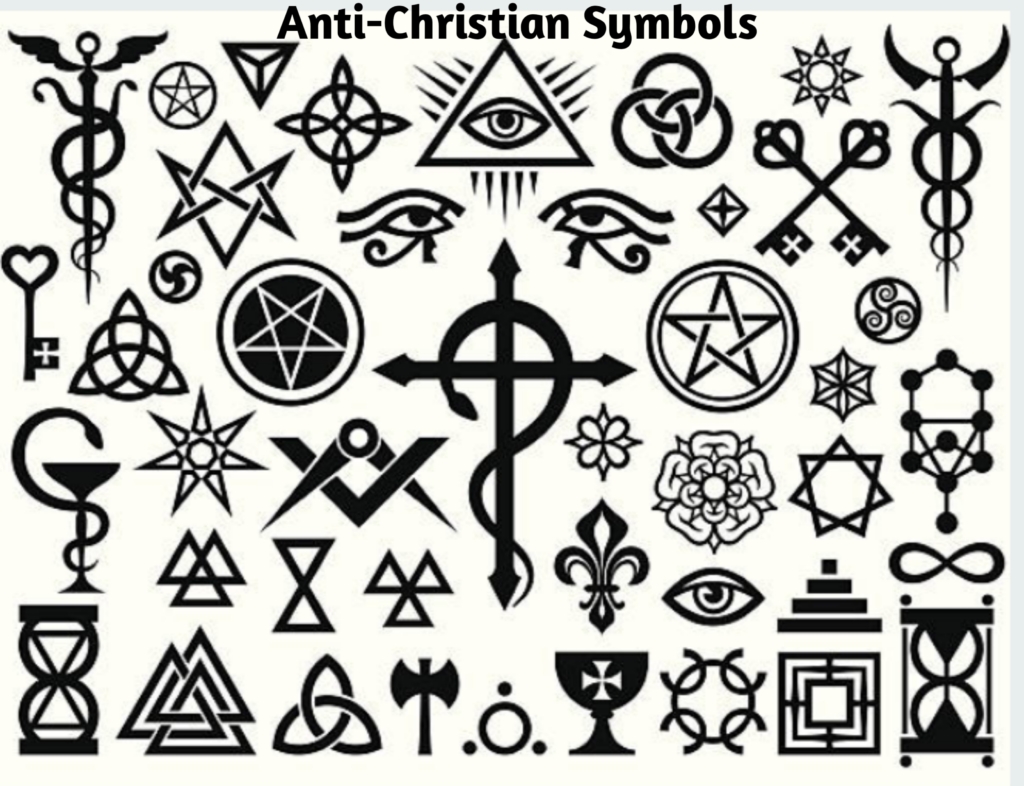
Introduction
In recent years, values and symbols in society have changed a lot, especially with the growth of digital media and global connections. Among the many symbols that represent different beliefs, anti-Christian symbols have become more noticeable. This change reflects wider cultural shifts, including a move toward secularism and questioning traditional beliefs. This article looks at the anti-Christian symbols present today, their origins, meanings, and their impact on society and personal faith.
What Are Anti-Christian Symbols?
Anti-Christian symbols are images or signs that show opposition to Christianity. They can be openly hostile or subtly critical, and their meanings often depend on the cultural context in which they appear.
Common Symbols and Their Meanings
1. The Upside-Down Cross
The upside-down cross, also known as St. Peter’s Cross, has a significant history. Traditionally, it symbolizes humility and martyrdom because St. Peter was crucified upside down, feeling unworthy to die like Jesus. Recently, though, it has been misinterpreted as a symbol of Satanism or rebellion against Christianity. This shift reflects a broader cultural trend where symbols are used to oppose established beliefs, often in popular media, to provoke shock or defiance against traditional values.
2. The Goat of Mendes (Baphomet)
The Goat of Mendes, often depicted as a winged goat figure, represents anti-Christian feelings. It has roots in various occult practices and symbolizes a rejection of Christian values in favor of a hedonistic lifestyle. In modern culture, Baphomet is celebrated in music and art, often seen as a figure of empowerment or rebellion. Its striking imagery makes it a powerful symbol for those rejecting traditional norms.
3. Satanic Symbols
Symbols linked to Satanism, like the Sigil of Baphomet and the inverted pentagram, are increasingly visible in mainstream media. These symbols challenge Christian teachings and promote a contrasting worldview. The Sigil of Baphomet features a goat’s head within a pentagram and represents individualism and self-empowerment. In contemporary culture, these symbols are used to provoke thought and critique organized religion, raising important questions about belief and morality.
4. The Rainbow Flag
While primarily seen as a symbol of LGBTQ+ pride, the rainbow flag also critiques traditional Christian views on sexuality and marriage. Introduced in the late 1970s, it represents diversity and inclusion, but some interpret it as a challenge to conservative Christian beliefs, especially on issues of gender identity and marriage equality. For many in the LGBTQ+ community, it symbolizes liberation from oppressive structures, leading to friction with conservative Christian groups.
Media Influence and Cultural Context
The rise of anti-Christian symbols today is heavily influenced by media, including music, film, and social media. Artists often use provocative imagery to challenge norms and spark discussions about faith and identity. However, this can also create misunderstandings and divisiveness.
Social media amplifies the impact of these symbols, often distorting their meanings. Memes and graphics can spread rapidly, leading to outrage and intense debates. This environment can create echo chambers where people only see viewpoints that confirm their beliefs, deepening divisions.
Additionally, popular culture often sensationalizes anti-Christian symbols, presenting them as edgy or rebellious. This portrayal can attract certain audiences while alienating those with traditional Christian values.
Impact on Society and Faith
The rise of anti-Christian symbols affects both society and individual believers. Many Christians may feel disheartened or marginalized, strengthening their community bonds but potentially isolating them from broader discussions.
For those who adopt anti-Christian symbols, these representations often signify freedom from what they see as oppressive beliefs. This can foster a sense of belonging to progressive movements.
This dynamic creates a complex relationship between faith and culture, challenging Christians to engage thoughtfully with contemporary issues while staying true to their beliefs. The presence of anti-Christian symbols invites believers to express their faith clearly and to reconsider their values in a changing world.
Ultimately, the impact of these symbols reflects larger societal trends of polarization and conflict. Both sides must navigate this landscape and foster respectful dialogue, seeking common ground despite differing beliefs.
Conclusion
The rise of anti-Christian symbols today shows a broader cultural shift that challenges traditional beliefs. Understanding these symbols and their implications is crucial for encouraging dialogue between different worldviews. While they can provoke strong emotions, they also provide an opportunity for Christians to express their faith meaningfully. By thoughtfully engaging with contemporary symbols, individuals and communities can navigate the complexities of modern society while staying grounded in their beliefs. In a world marked by diverse perspectives, the need for understanding and dialogue is more important than ever.